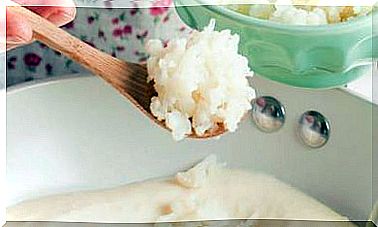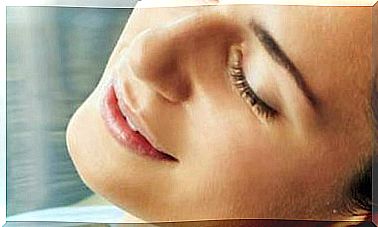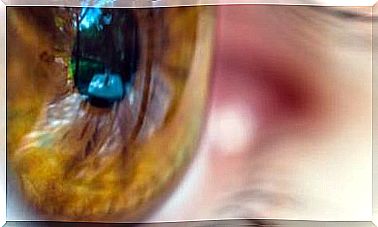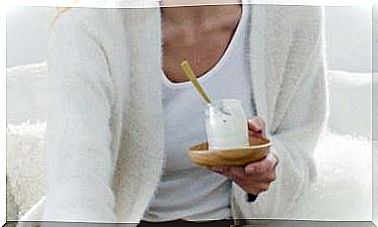How To Prepare Two Natural And Homemade Deodorants
Natural and ecological deodorants do not prevent you from sweating but they neutralize the smell of sweat. You can make them at home!

Do you know the difference between a deodorant and an antiperspirant? Many people believe that they are the same or are unaware that they act differently. However, the deodorant controls the bad smell, but does not prevent sweat, while the antiperspirant blocks the sweat and, in addition, the bad smell.
Our body produces two types of sweat: one that contains saline water secreted by the eccrine glands to reduce body temperature, and another with an exudate of fat and protein from the apocrine glands. The first does not produce odor, but the second is deposited on the skin and hair, which becomes a breeding ground for bacteria that cause odor.
That is why the parts of the body where sweat smells have in common that there are sweat glands and poor ventilation and humidity, which accelerate the growth of bacteria. The smell is also higher in some people than others, partly because of the hormonal difference, and men tend to sweat more than women.
The problems of conventional deodorants
There are several options to combat odor and sweating, among which are natural ones. Conventional aerosol deodorants and antiperspirants are very cooling and effective, but they contribute to the greenhouse effect.
In addition, the aluminum salts used in antiperspirants to block sweat create a gel layer on the apocrine sweat glands that reduces secretion by closing the pore. They do not prevent you from sweating, but rather that sweat is not released. In some people, this can inflame the apocrine glands, causing lumps or nodules called swallows or hydrosadenitis.
There are natural deodorants
- In roll-on. Among the ecological and natural options you have roll-on deodorants made with an emulsion or a natural gel. They don’t prevent you from sweating, but rather cover up the odor and can keep bacteria at bay. They hydrate well, but can leave a sticky feeling.
- Bar. Like a balm, they are good moisturizers, fight odor, and can fight bacteria. They are a good option for sensitive skin. They do not contain alcohol, but they can stain clothing.
- Spray or stone. There are also propellant-free spray deodorant options with a greenhouse effect and the well-known natural alum stone bars.
- Homemade. Another option is to make your own deodorants with natural substances such as vegetable oils and butters, antibacterial essential oils, and extracts with analgesic or anti-inflammatory properties. They do not prevent you from sweating and last less than the commercial ones, but they are worth it for being 100% natural and respectful with your skin and the environment.
Aloe vera roll-on deodorant to make at home
Moisturizes, protects and is ideal for sensitive, shaved or depilated skin. The essential oils (EA) of sage and lavender fight bacteria; and ylang ylang is sweet and fragrant; tapioca traps fat and sweat; and the alum powder is hemostatic, antiseptic, deodorizing, healing and firming.
Ingredients for 50 g:
- 33 g of aloe vera gel
- 1 g of alum powder
- 0.5 g allantoin
- 5g tapioca starch
- 10 g of mineral water or witch hazel
- 10 drops of clary sage AE; 10 ylang ylang AE; and 17 of AE of fragonia or lavender
- 12 drops of grapefruit seed extract (or 10 g of Cosgard preservative)
Elaboration:
- Beat the aloe and alum in a mortar until combined.
- In another container, mix the starch with the water or hydrolate and the rest of the ingredients until you obtain a homogeneous, very smooth paste.
- Mix the aloe gel with the starch paste and mix vigorously.
- Transfer to a roll-on jar.
- Caution: A pH of 6 to 6.5 remains. Test on the inside of the elbow and verify that in 24 hours it does not irritate you. With the preservative, it lasts up to 3 months in a cool, dark place. If not, use it in a month.
Calendula stick deodorant
You can apply it after shaving or waxing. Shea softens and hydrates, and with calendula forms a restorative and calming synergy. Bisabolol is also purifying.
Ingredients for 50 g:
- 10 g shea butter
- 13 g of candelilla wax
- 23 g of calendula oil
- 9 drops of bisabolol
- 20 drops of peppermint AE; 15 of EC of palmarosa; 15 of EA of mandarin or lemon; and 34 lavender AE
- 3 drops of vitamin E
Elaboration:
- Melt the butter, calendula oil and wax in a bain-marie.
- Off the heat, add the rest of the ingredients and stir well with a stainless steel spoon.
- Pour into a stick deodorant tube or a recycled glass bottle (clean and disinfected), with a cosmetic spatula to remove it.









